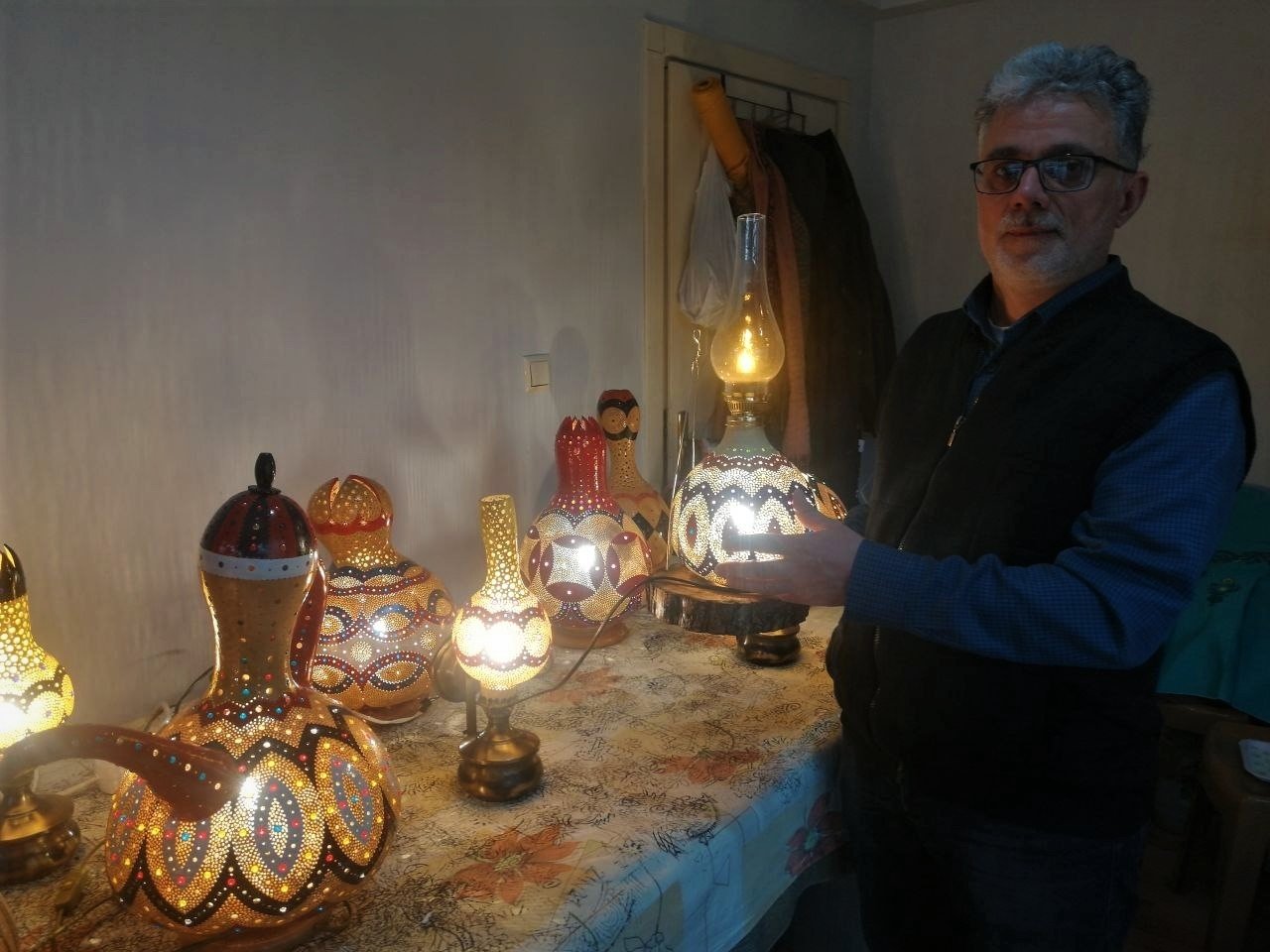© Turkuvaz Haberleşme ve Yayıncılık 2025
Serdar Takuçin, never let go of the calabash, a vegetable also known as bottle gourd, ever since he was introduced to it during a trip three years ago. Motivated by what he saw, a piece of art made out of a calabash shell, he tried his hand at the craft, taking it up as a hobby. After honing his skills over the last three years, he has now started creating works of art from the vegetable, including decorative lamps, lampshades and ornaments.
The versatile calabash plant can be eaten or dried to produce containers and musical instruments. Some of the lamps that Takuçin makes resemble Turkish mosaic lamps that tourists love.
Father of two, Takuçin (49), lives in Turkey's eastern city of Elazığ. He has attended training courses to learn more about the craft.

Takuçin, who mastered this art, also works as a lead instructor at the Elazığ Public Education Center, where he trains students. He also sends the artwork he makes to all 81 provinces of Turkey.
Touching on how the calabash must go through numerous stages before it can be turned into a product, Takuçin explained: "I started this business with a pumpkin that I came across during a trip three years ago. Then I traveled outside the city to get training from masters who did this work artistically and after I learned the trade, I came back to my hometown."
Takuçin obtains the plants from friends who grow them and other sources. In recent years, he said, calabash plants have been used as garden ornaments in Elazığ but locals have also started making artistic products out of them, especially in the coastal cities.
"Bottle gourds are a natural material, which makes it a material that can handle mistakes," he added.
Emphasizing that he learned this craft in order to utilize waste materials, Takuçin said: "I engrave religious, spiritual and material motifs that symbolize our cities and our country on them. Previously, I was only making flat lamps in the style of table lamps. Later, I started making tall floor lamps, and if the shape is suitable I engrave animal motifs."
Depending on the artwork engraved onto the calabash and the process employed, it takes Takuçin between two to 15 days to complete one piece.
"After it is finished, I start the painting and beading process, and at the last stage, I varnish it so that it is protected from moisture and decay, and extends its longevity," he explained.
"I engrave the motifs of the cities my customers live in. I have sent my products to many cities in Turkey, and the last long-distance place I sent my work was to Turkish Cyprus," he added.
